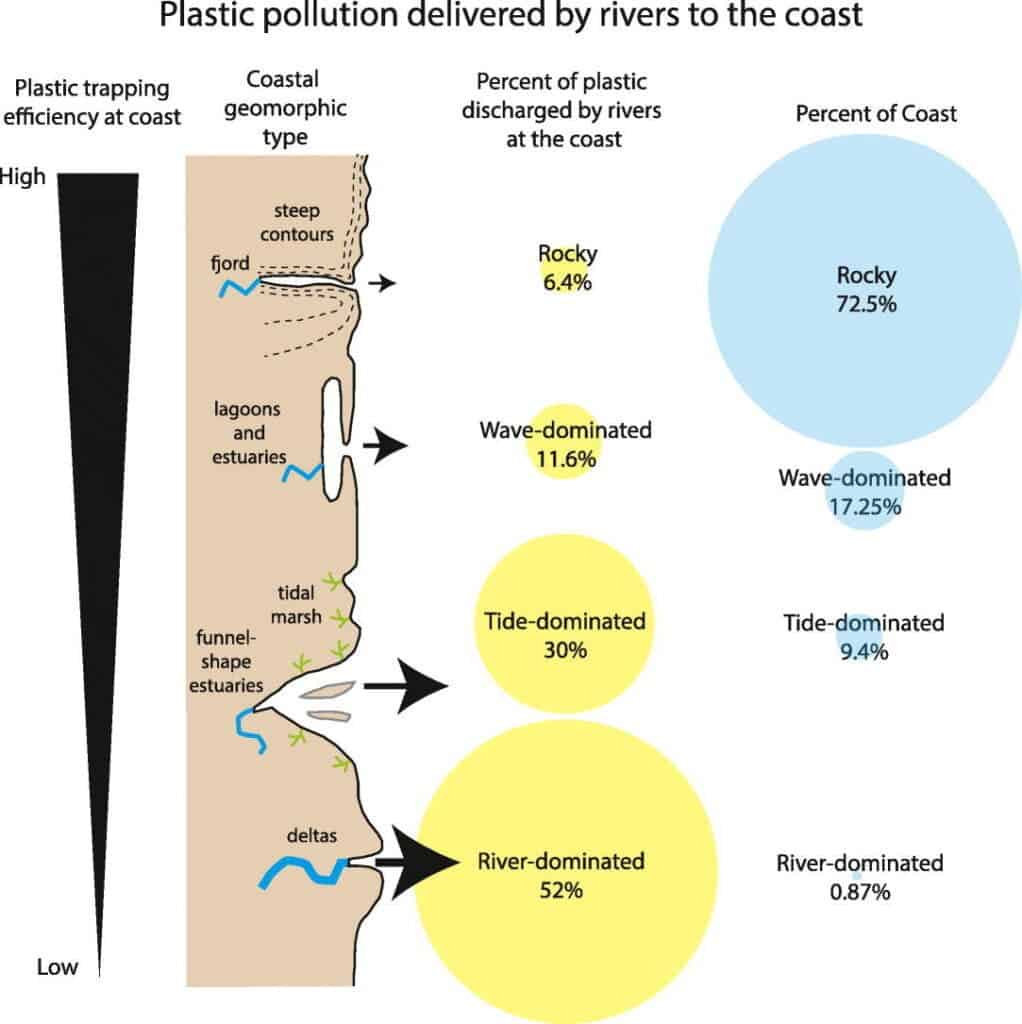Plastic pollution has steadily become one of the biggest environmental problems today. But not all ecosystems are equally affected by it, according to a new study. Researchers found that mangroves are particularly highly at risk of being polluted with plastic waste carried from rivers to the sea, especially in Asia.

Worldwide, over 300 million tons of plastic are produced every year, half of which is used for single-use items such as cups and straws. Around eight million tons make their way into the oceans every year, killing marine life and even entering the human food chain — an average person ingests up to 5 grams of plastic a week.
Countless previous studies have shown the need to address plastic pollution and carry out large-scale clean-up activities, but we’re also learning something new every day about this problem. The recent study carried out by University of Bergen researchers is the first global assessment of coastal environments’ exposure to river-borne plastic pollution. The Norway-based researchers overlaid maps of coastal ecosystems with the most current information on the input of river-borne plastic to sea, finding out which ecosystems are most affected by plastic waste.
River-dominated coasts comprise less than 1% of the global coast and yet they receive 52% of plastic pollution delivered by fluvial systems, according to the findings. In contrast, rocky shores, which represent over 70% of the global coast, including fjords and coral reefs, only receive 6.4% of the river-borne plastic pollution. All types of coastal environments were affected by plastics to some extent.

The researchers also looked at the exposure of mangroves, coral reefs, seagrass, and saltmarsh to rivers that discharge high amounts of plastic into the sea, in excess of one ton per year. They found that mangroves were the most affected, with 54$ of their habitat located within 20 km of a river that discharges plastic. The less affected were coral reefs, with 17% of them near of a polluting river.
“To effectively fight the growing problem of marine plastic pollution, we need to know how plastic waste is distributed and which ecosystems are most affected,” Peter Harris, lead author of the paper and managing director of GRID-Arendal, said in a statement. “Now that we know mangroves have a higher likelihood of being severely affected by plastic waste, leaders can take steps to protect these critical habitats.”
Of all the regions in the world, the study show Southeast Asia was the most affected by river-borne plastic pollution. This agrees with previous studies that found 86% of plastic pollution enters the oceans from Asian rivers, making mangroves, coral reefs and other ecosystems in the region particularly vulnerable to plastic waste.
Canary in the coal mine
Mangroves are a group of trees and shrubs living in the coastal intertidal zone, with about 80 different species that grow in areas with low-oxygen soil and slow-moving waters. They can only exist at tropical and subtropical latitudes near the equator because they can’t tolerate cold temperatures. They have densely tangled roots, which makes them appear to be standing on stills above water.
They carry out very important tasks such as reducing erosion from storm surges and stabilizing the coastal line. Local fishermen depend on them, as the root system makes the forest attractive to fish and other organisms looking for shelter. Still, they are being challenged by pollution and climate change. Studies have shown many of them won’t be able to adapt to the forecasted sea-level rise.
Because mangroves are so useful but so vulnerable to environmental threats, they’re sometimes considered a ‘canary in the coal mine’ — whenever there’s pollution in sight, they will be among the first to suffer.
For the researchers, the conclusions behind the new study are relevant to monitoring and policy responses to coastal plastic pollution, providing a basis for targeted strategies that reflect differences between exposure to river-sourced plastic pollution, coastal dynamics and ecology. They suggested authorities prioritizing reducing plastic waste in the most affected areas.
The study was published in the journal Science of the Total Environment.


